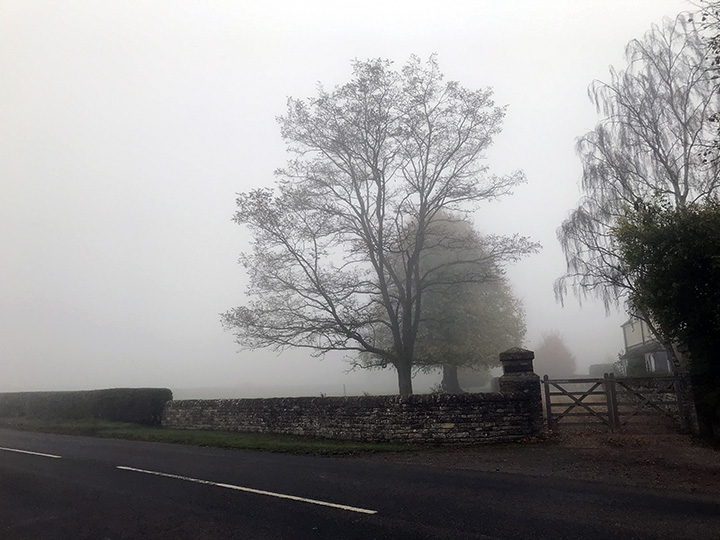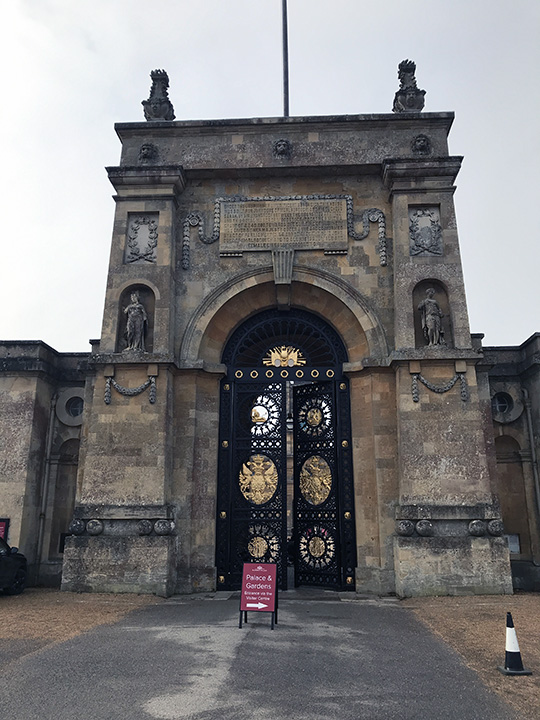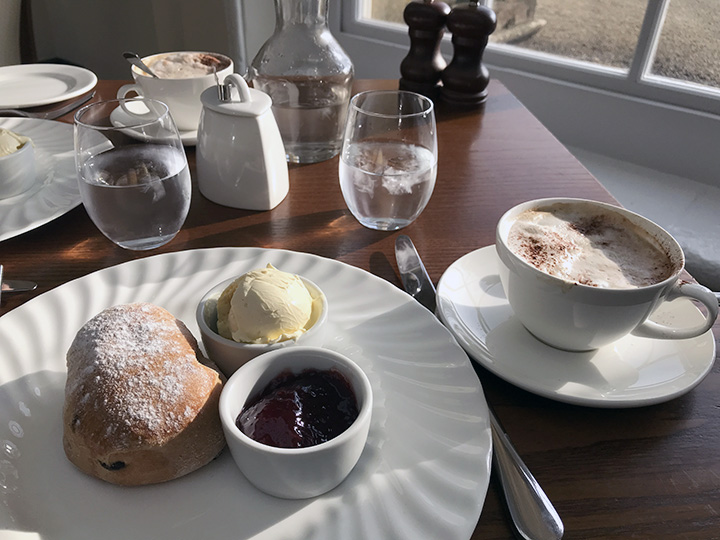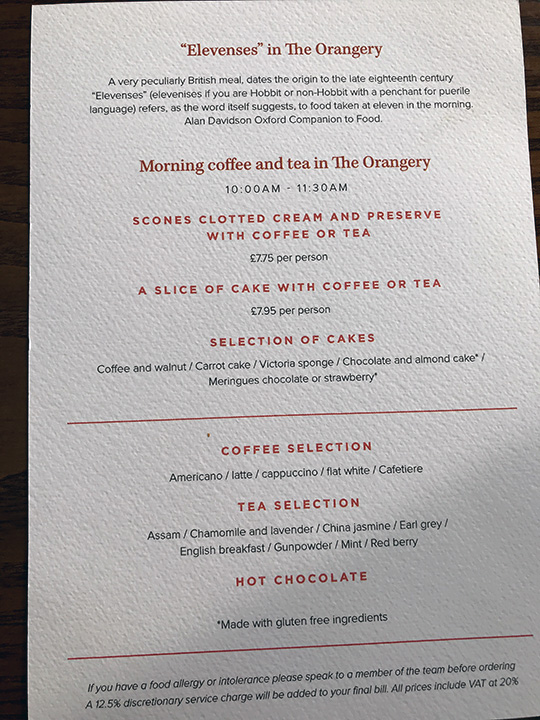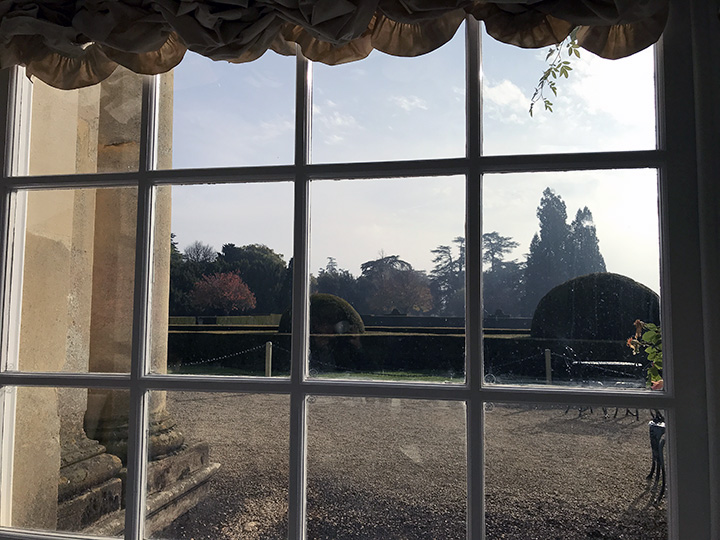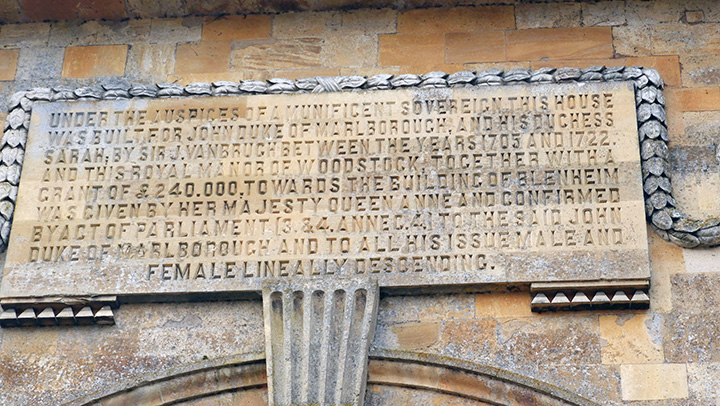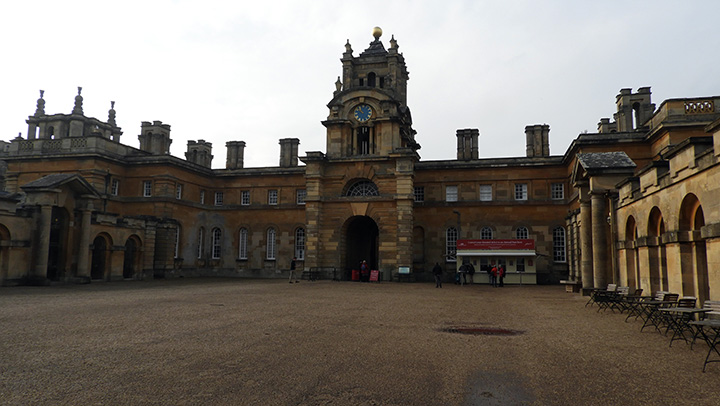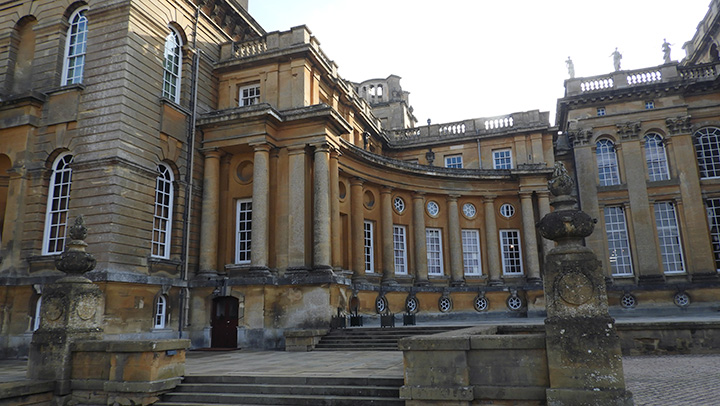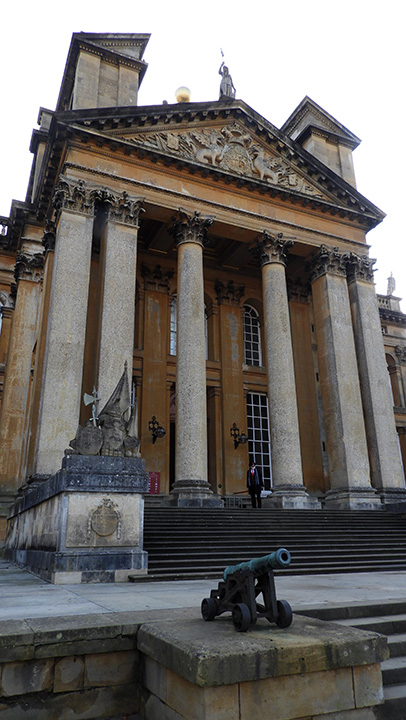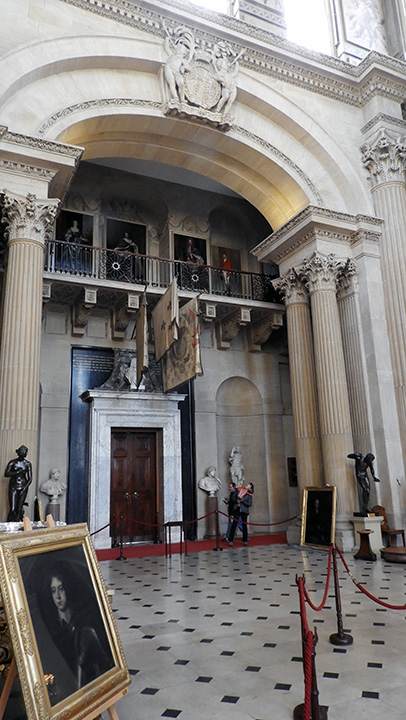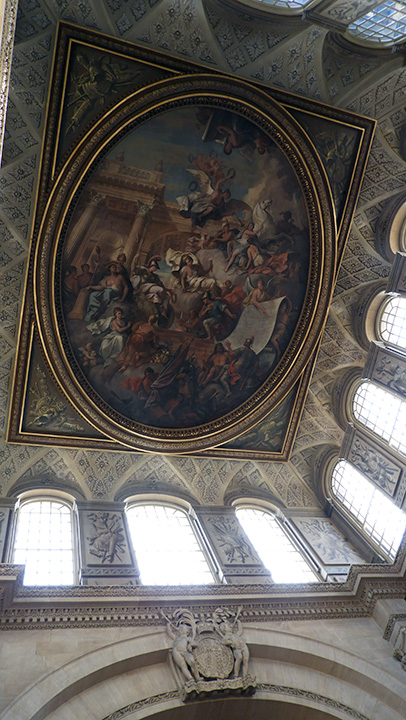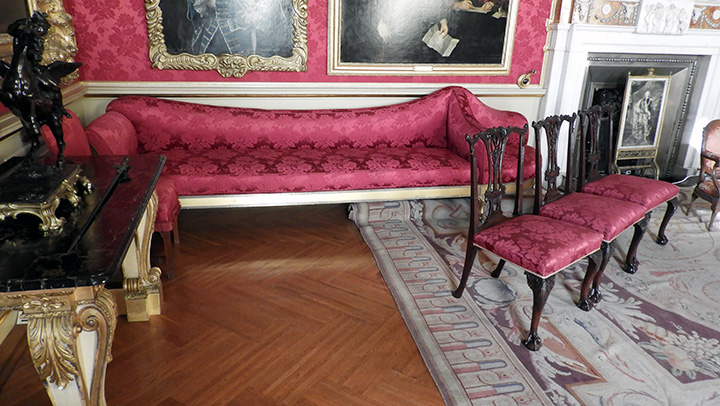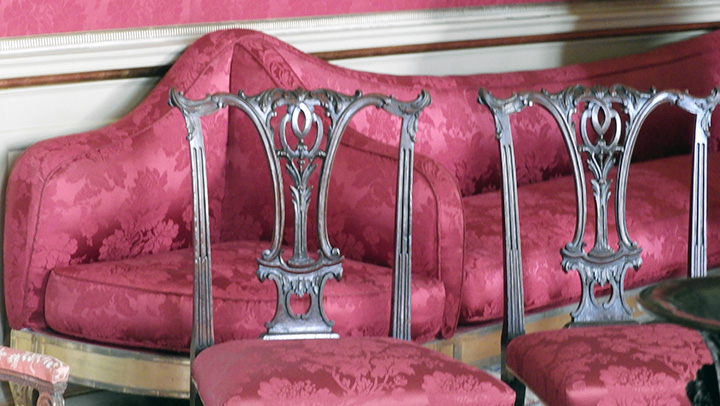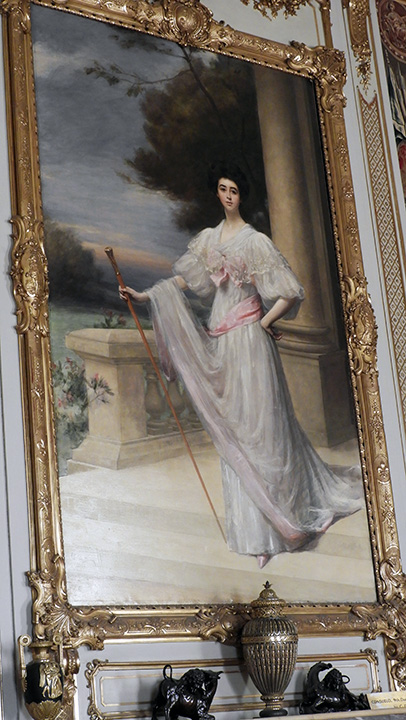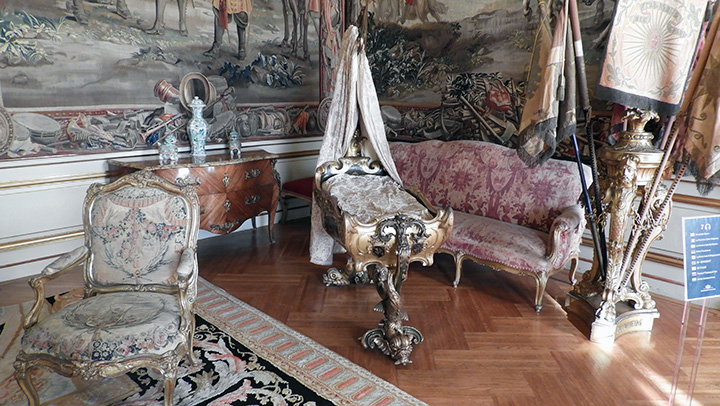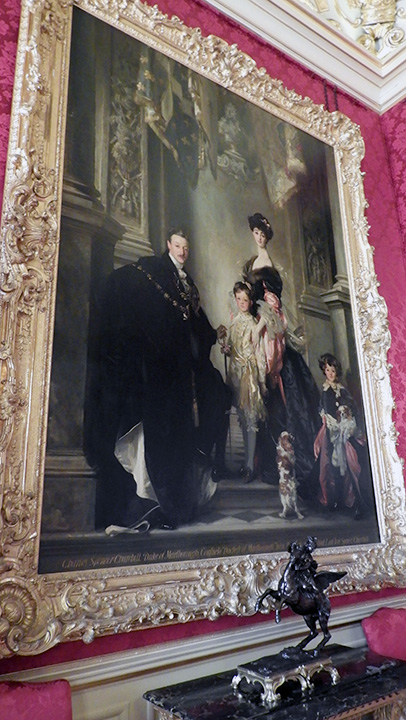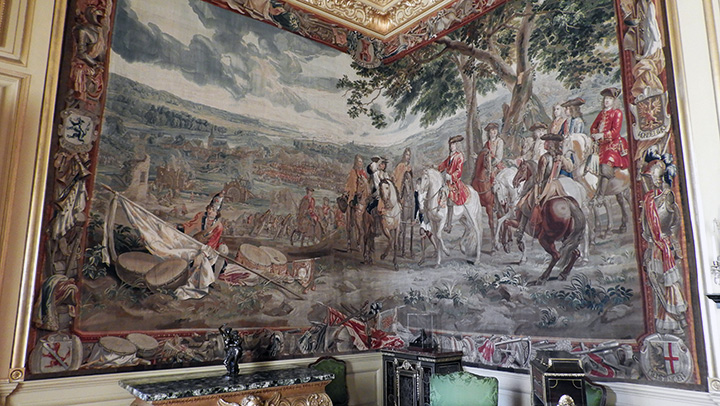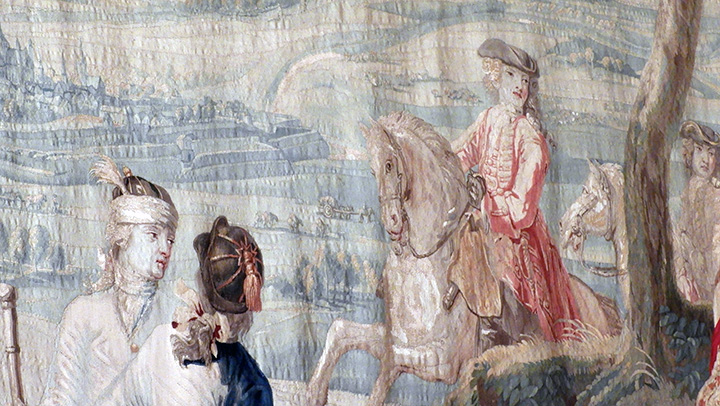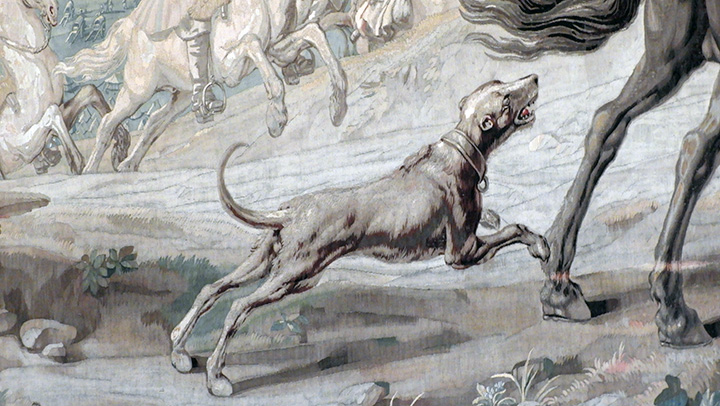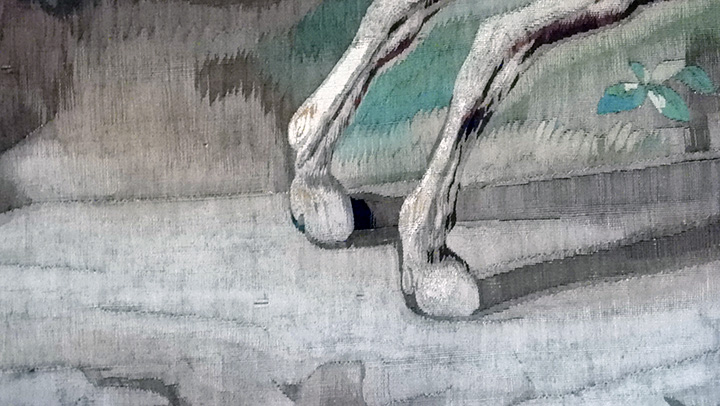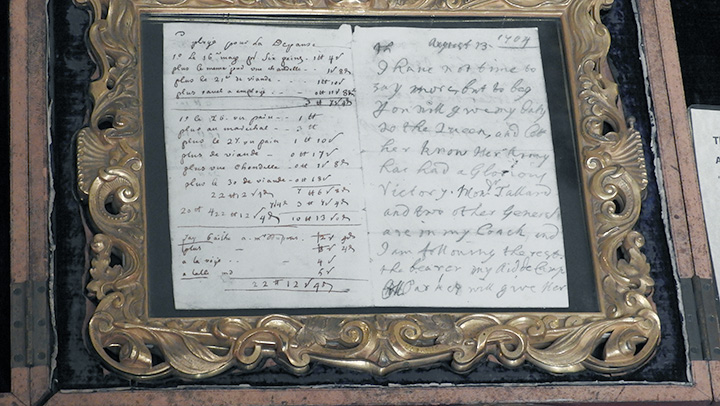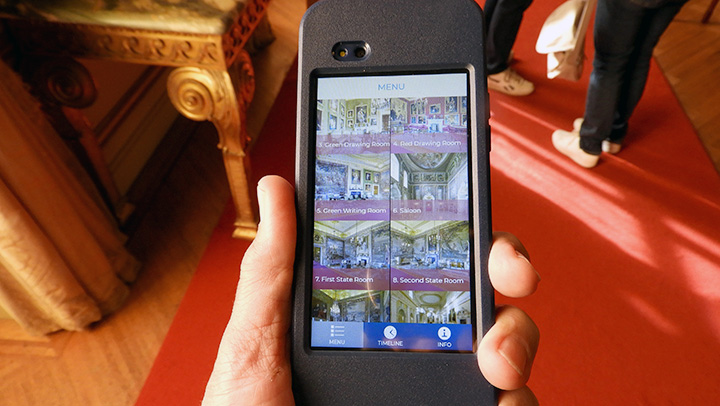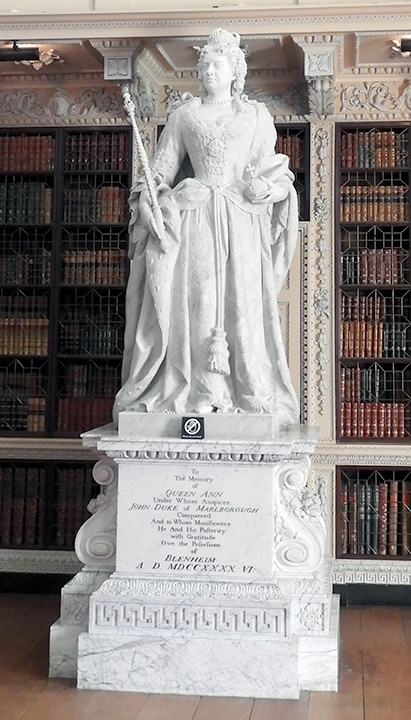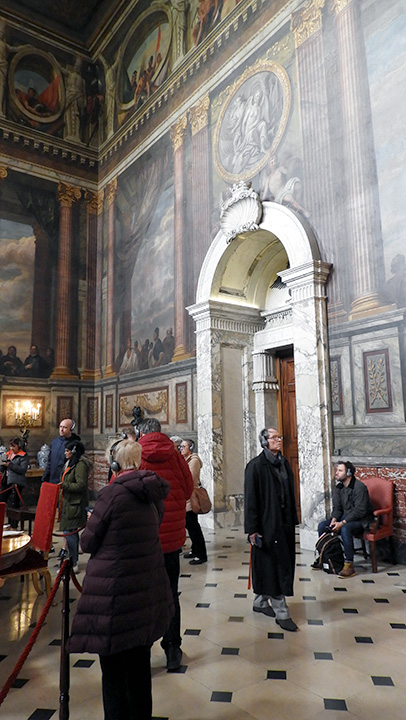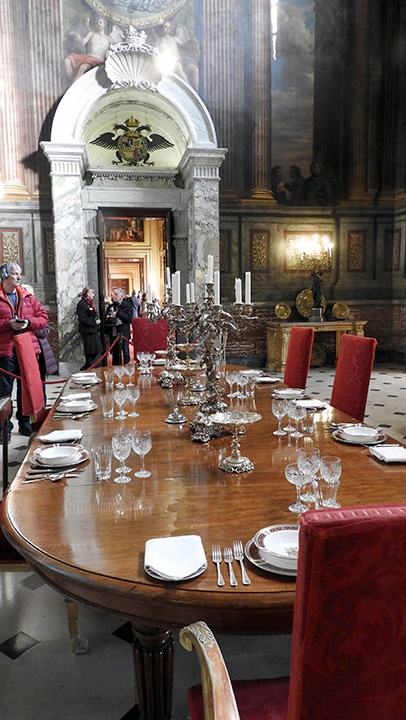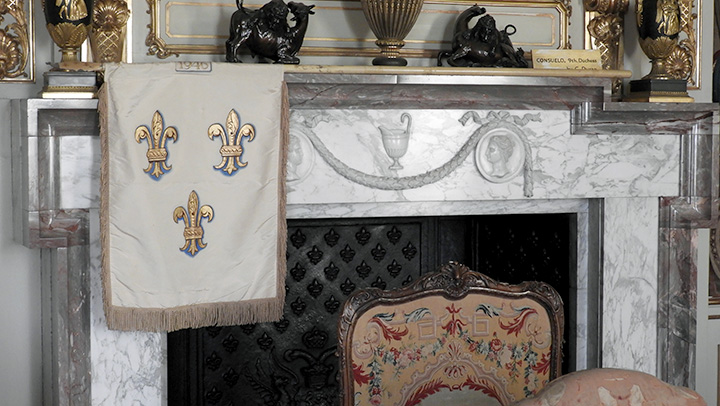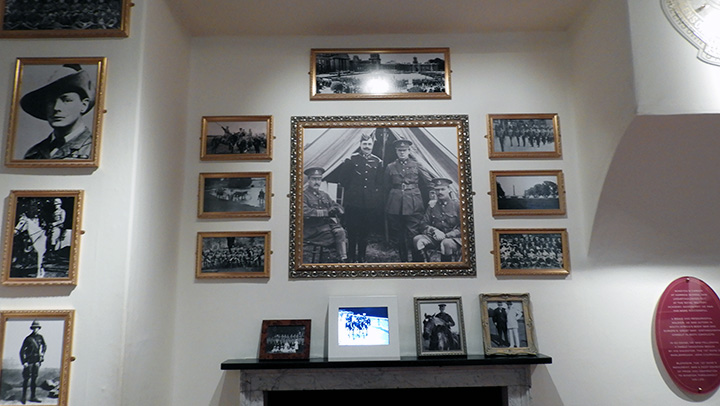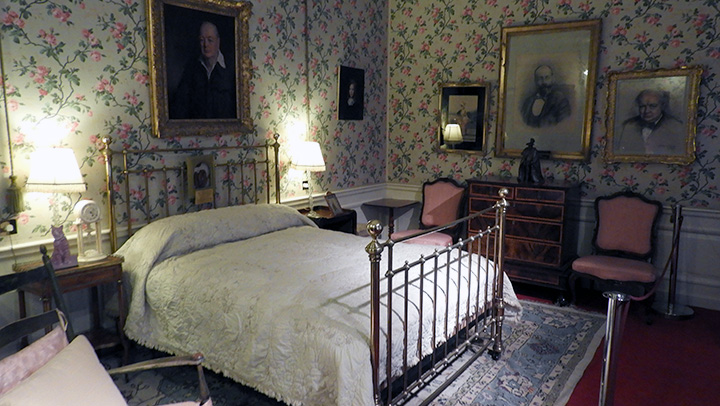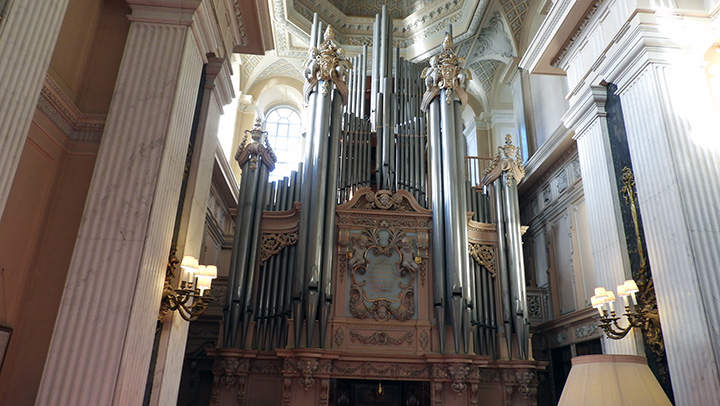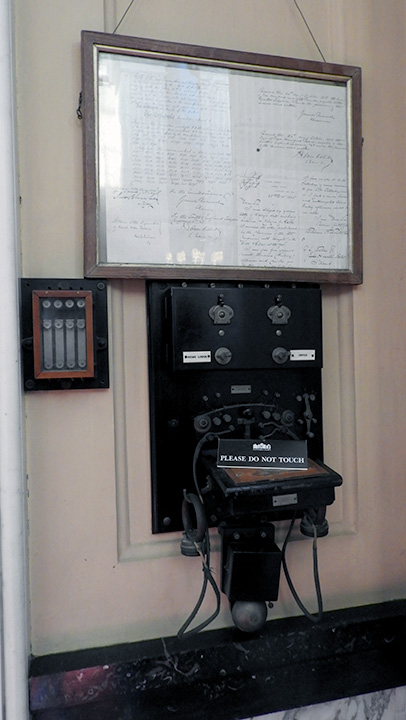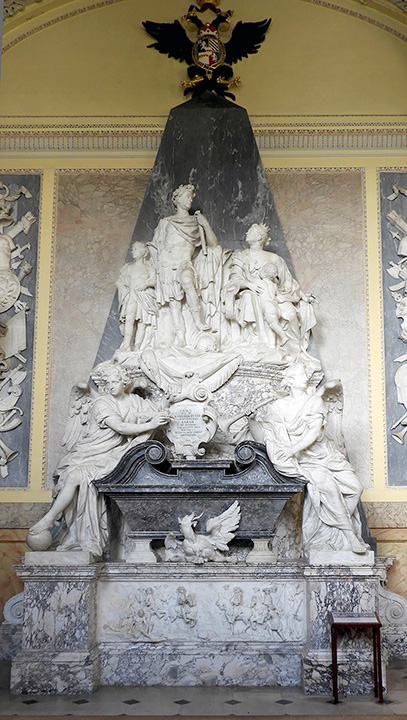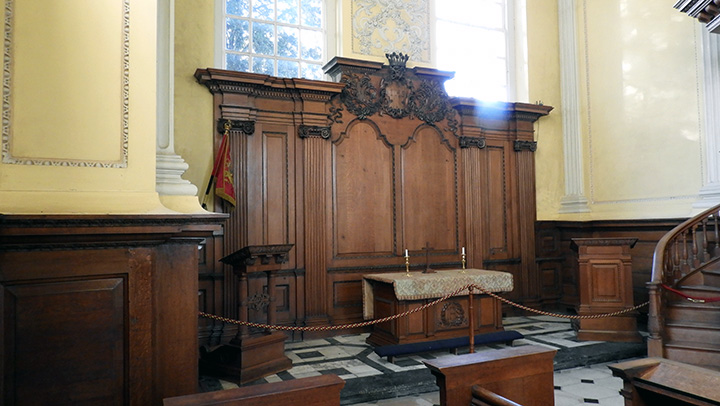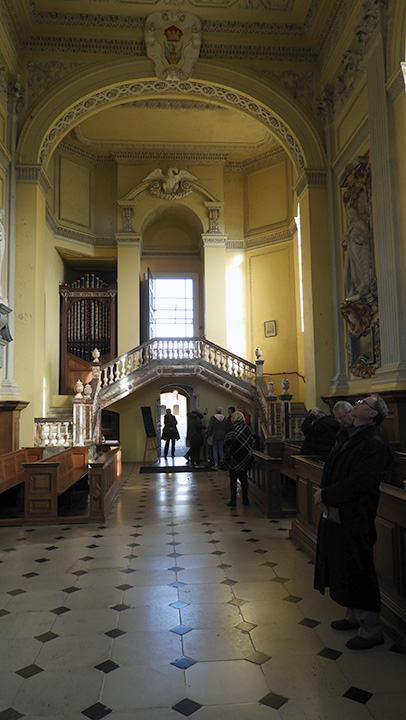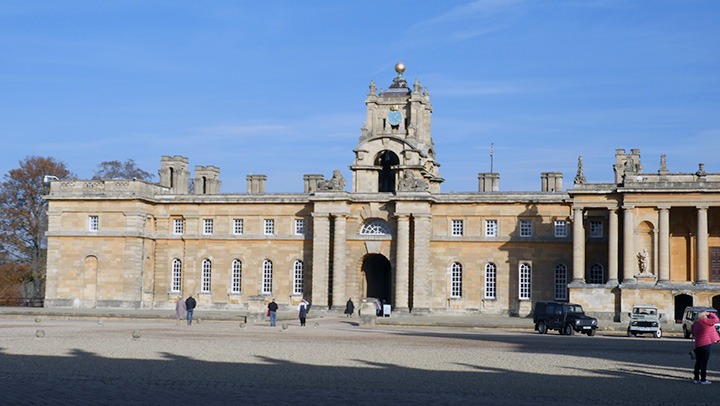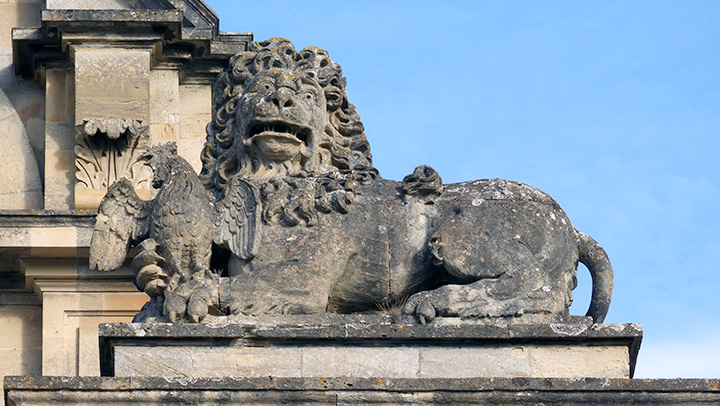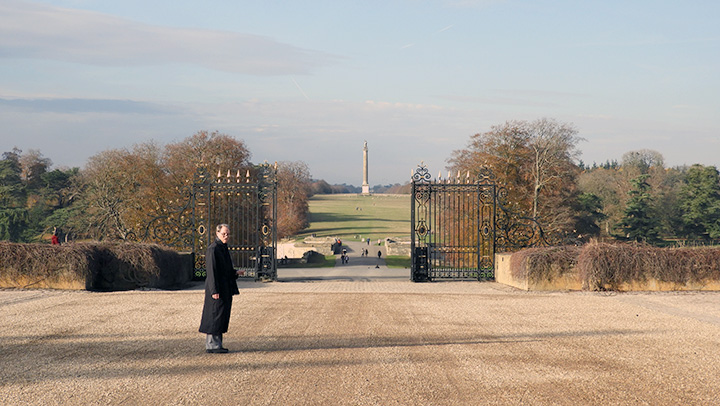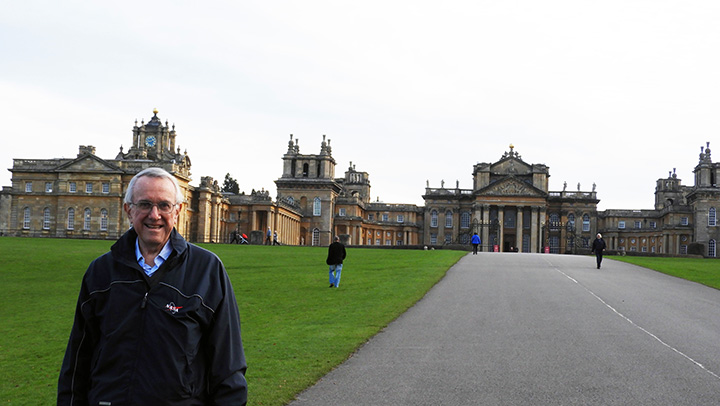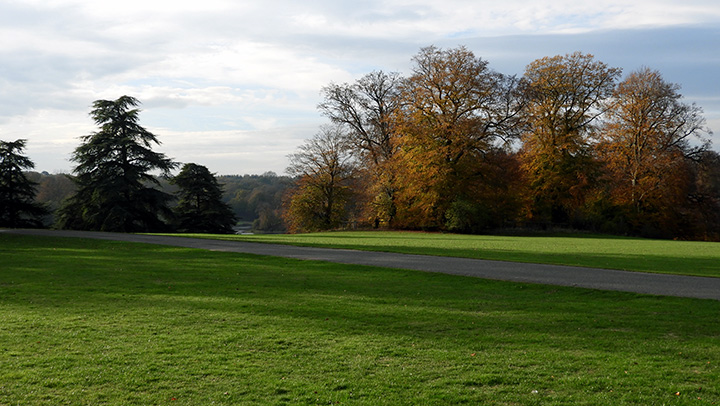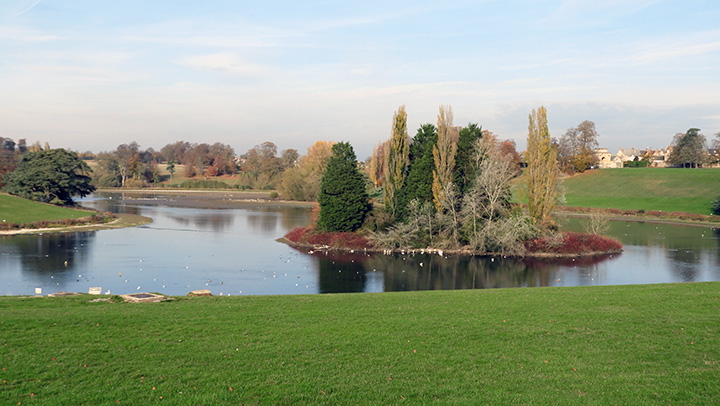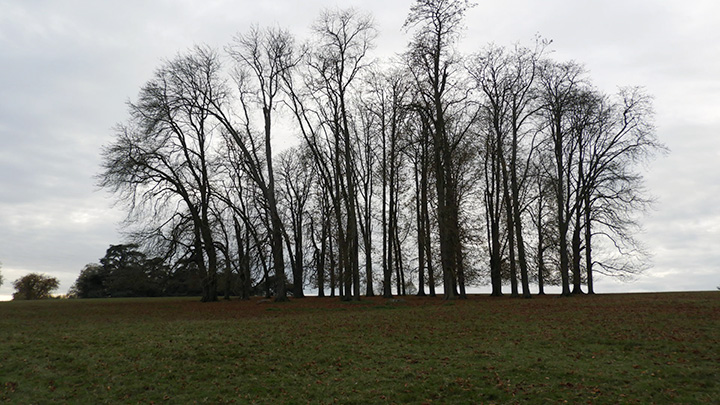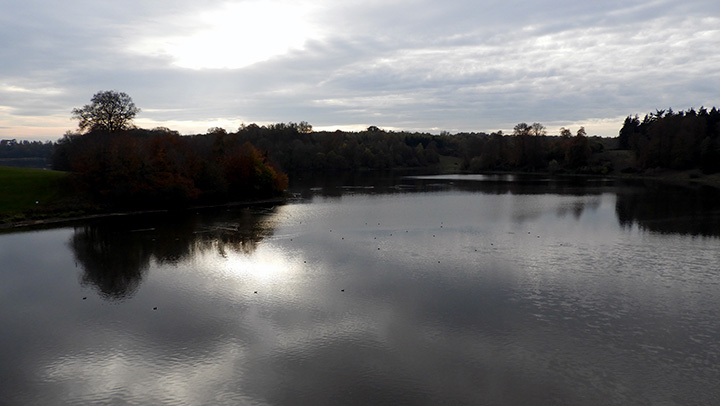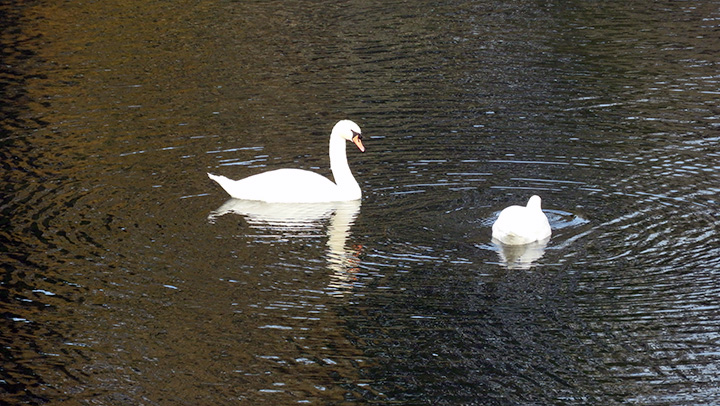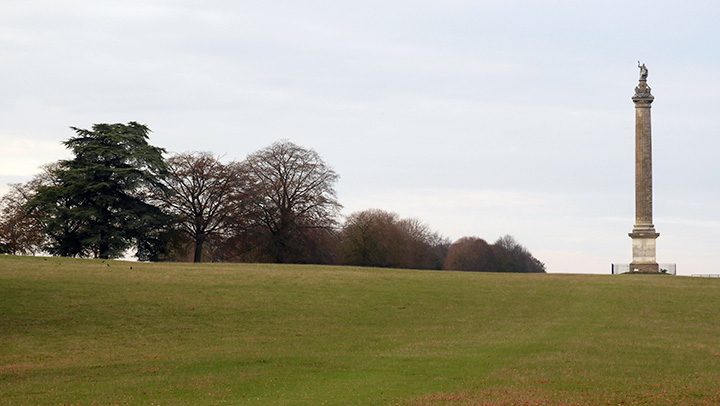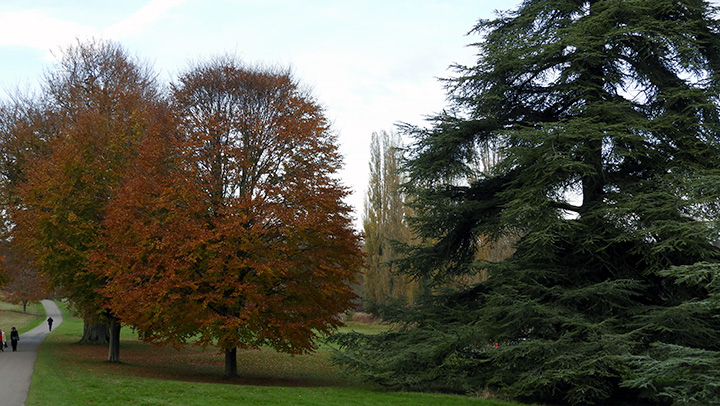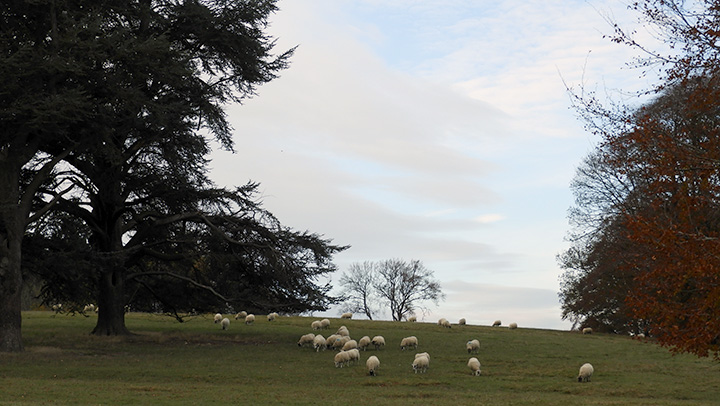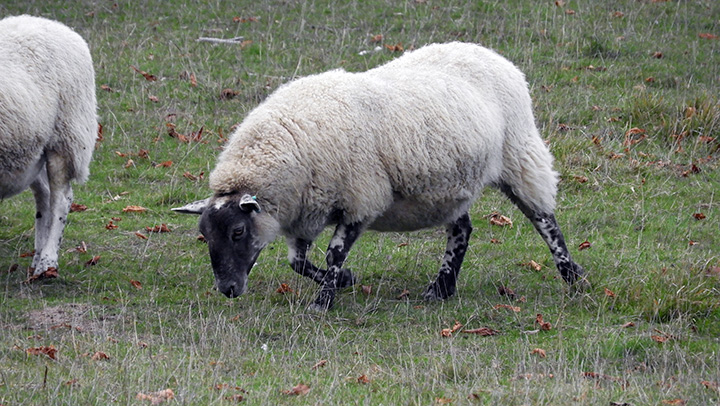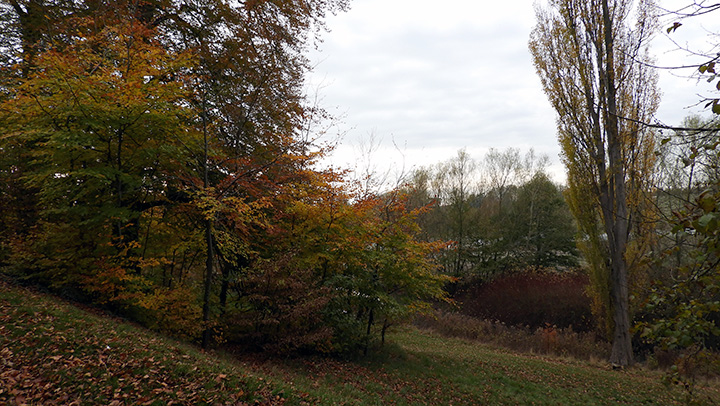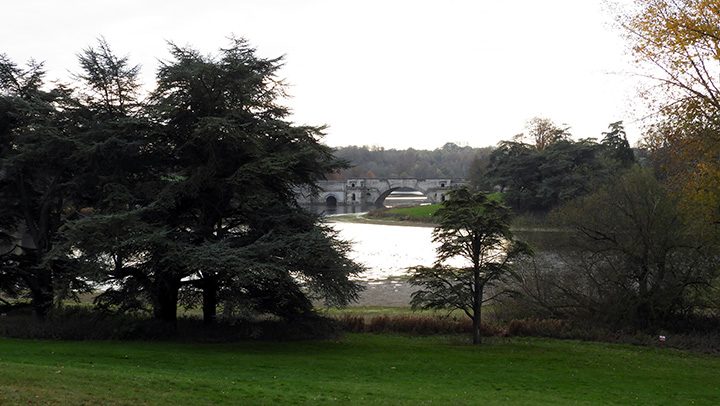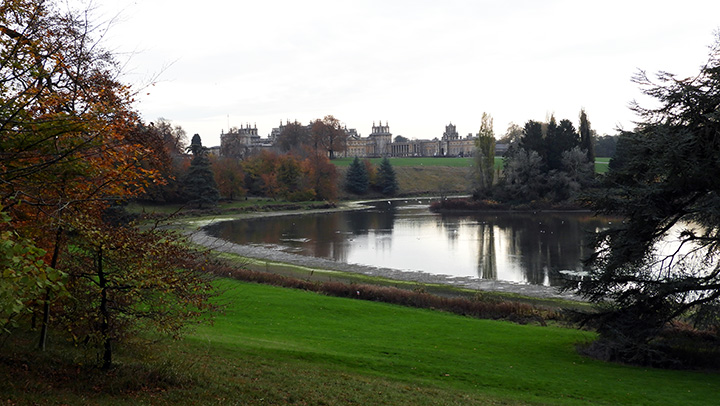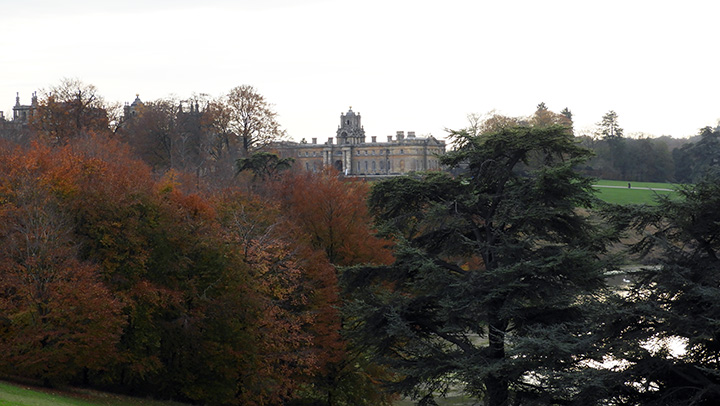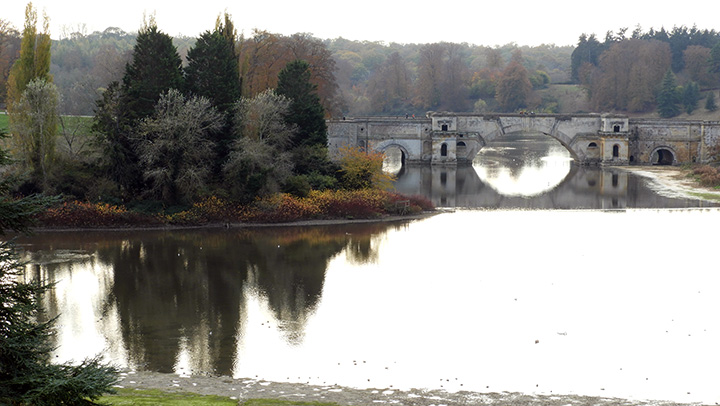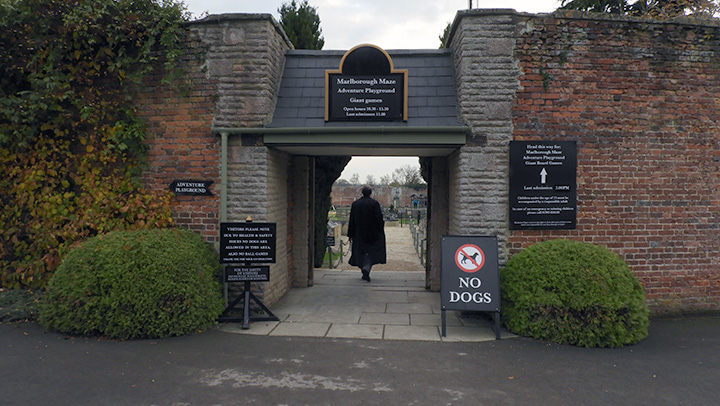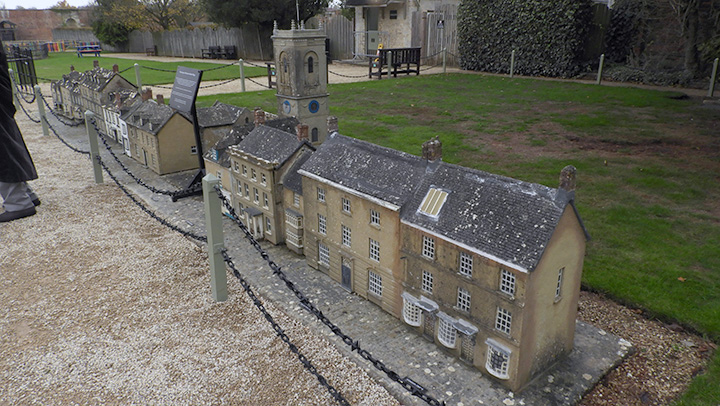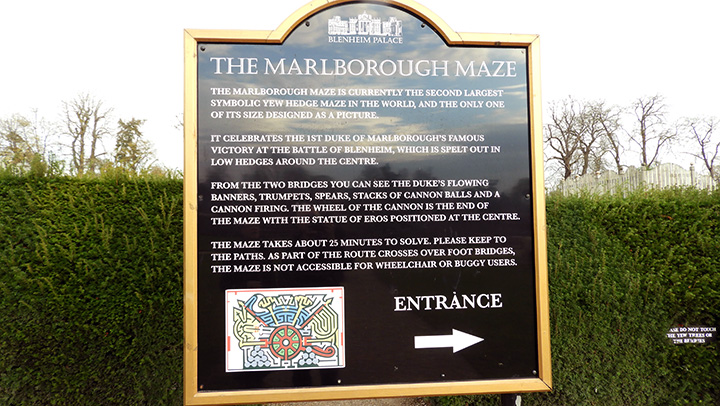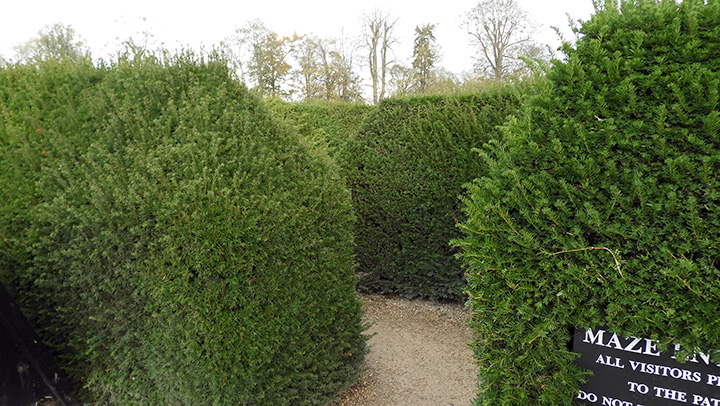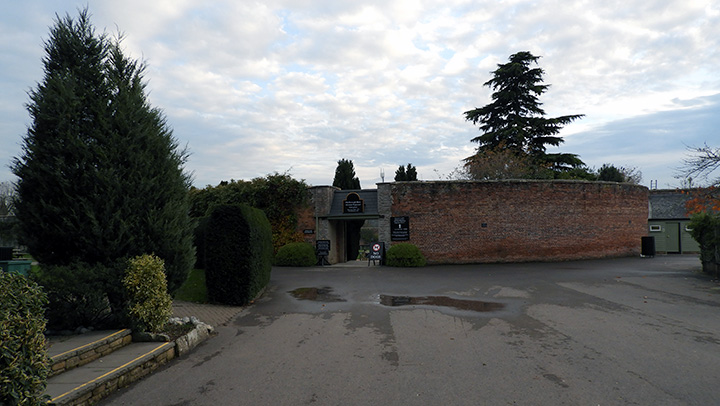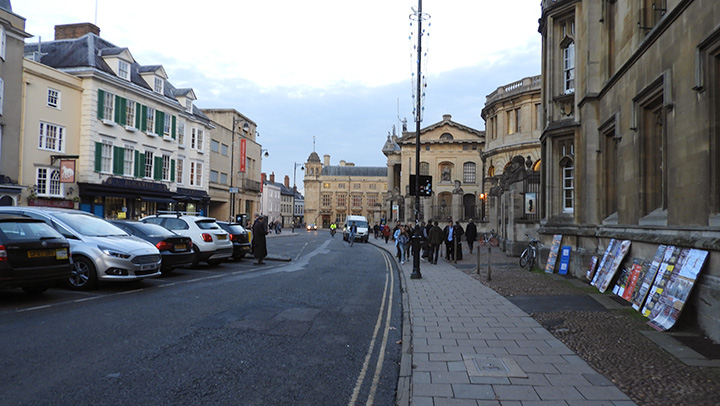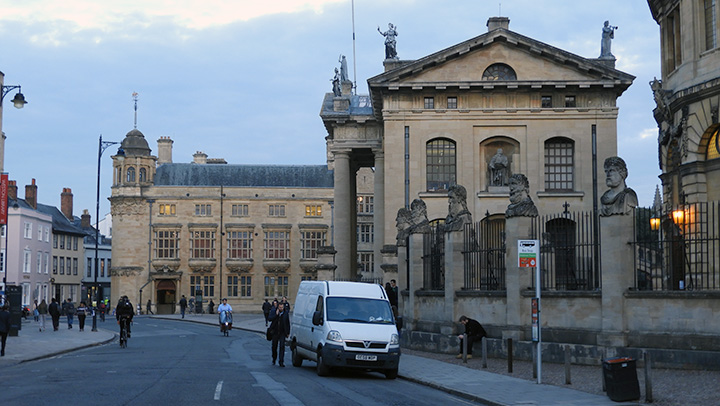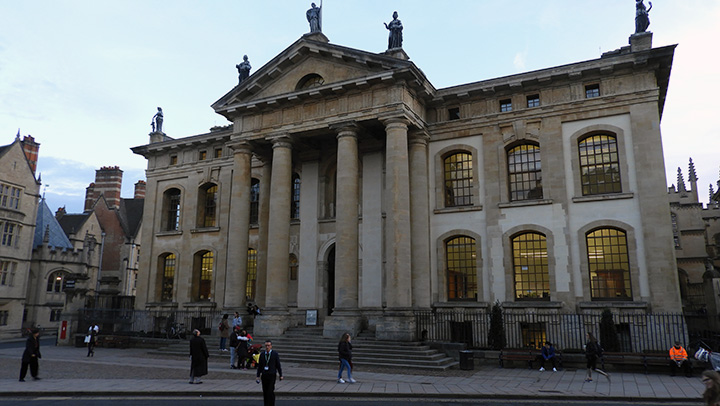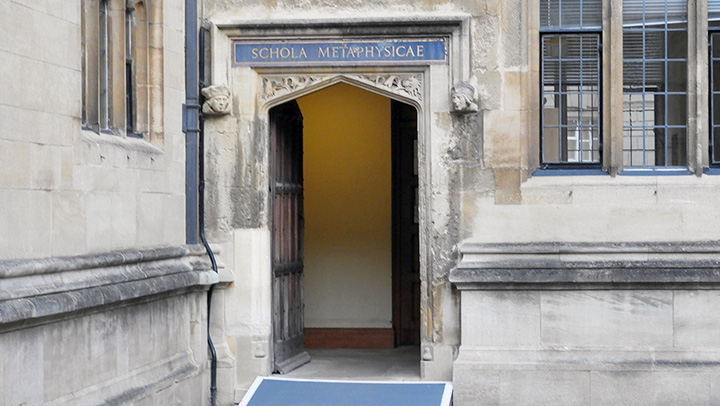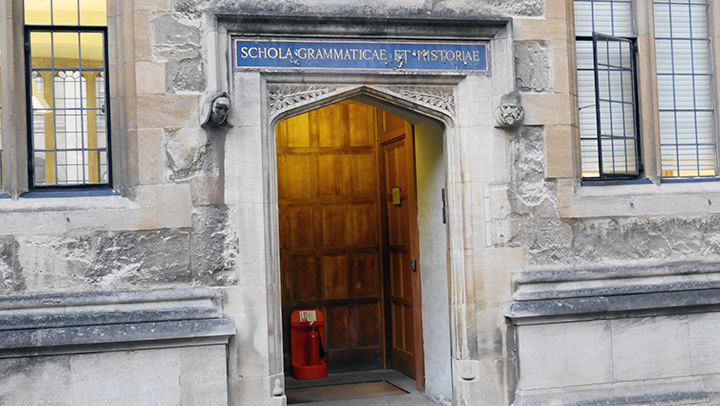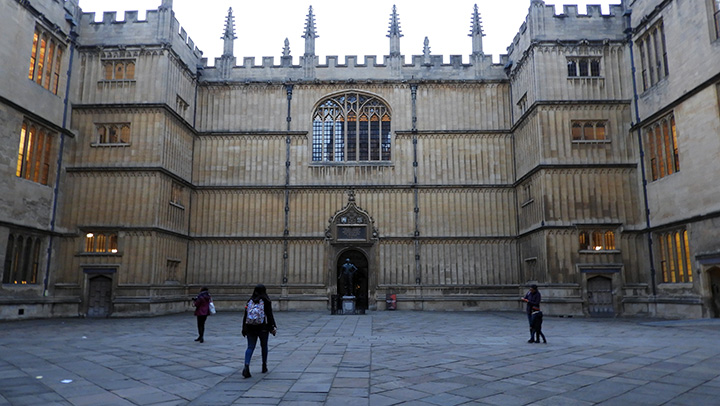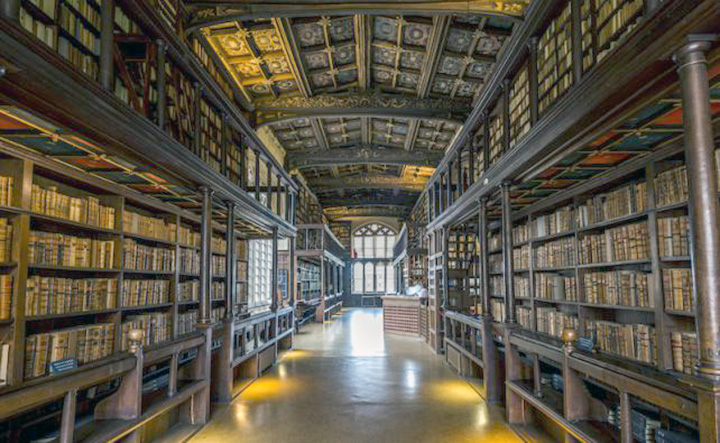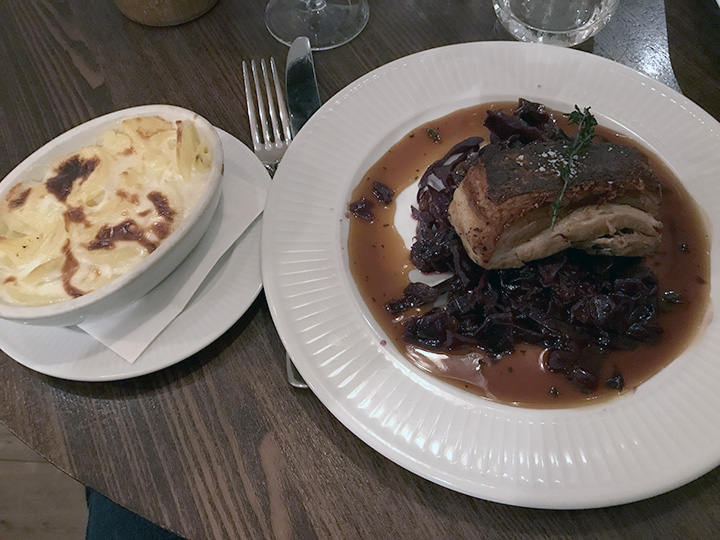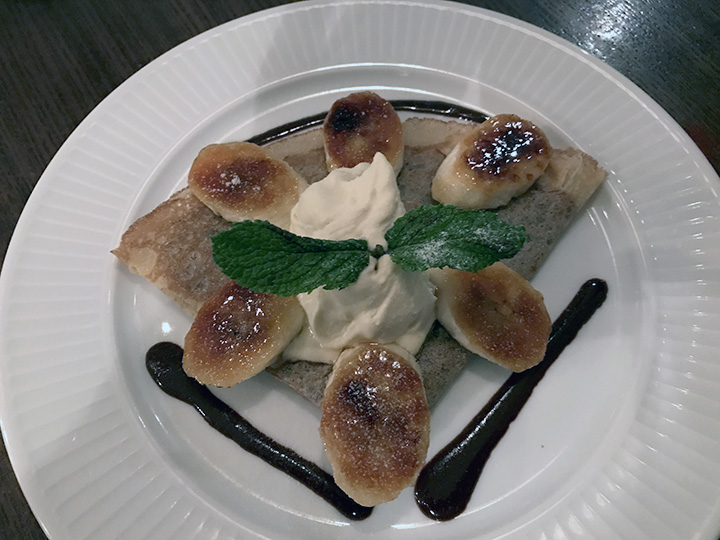|
Sure was foggy this morning. If we hadn't planned a big day of travel we might have waited a while longer to hit the road. But we were in England and we wanted to explore, so off we went about 80 miles southwest to Blenheim Palace.
Foggy. See?
But eventually we made it through more than two hours of roundabouts on the wrong side of the road and we arrived at the fabulous Blenheim Palace you've heard so much about.
Sure you've heard about it. The Duke of Marlborough's place, Diana's great great great something, the palace where Winston Churchill was born. Now do you remember? No? OK, here's some background:
During the War of the Spanish Succession Churchill cemented his reputation as a capable military commander, and in 1702 he was elevated to the dukedom of Marlborough. With a glorious victory at the Battle of Blenheim in 1704, the Crown bestowed upon Marlborough the tenancy of the royal manor of Hensington (situated on the site of Woodstock) to site a new palace, and Parliament voted a substantial sum of money towards its creation. The rent due to the Crown for the land was set at the peppercorn rent or quit-rent of one copy of the French royal flag to be tendered to the Monarch annually on the anniversary of the Battle of Blenheim. Quite a deal -- no money, just a flag. This flag is always displayed by the Monarch on a 17th-century French writing table in Windsor Castle. We'll see an example of the flags later on our tour. So the Queen rewarded Marlborough with an estate that would be named after the glorious Battle of Blenheim, and would belong to him and his heirs, whether male or female, in perpetuity. What was never firmly established was who was going to pay for the place. Parliament had chipped in, but money was always tight – a problem exacerbated by Marlborough’s impulsive hiring of the architect John Vanbrugh, a man of extravagant tastes, to build his palace in a flamboyant style known as European baroque. Sarah, who would have preferred Christopher Wren for the job and a different architectural style altogether, clashed with Vanbrugh constantly, eventually firing him over the construction of an outlandish bridge over a creek on the palace grounds. (Sarah wanted a bridge; Vanbrugh wanted a mini-palace.) But eventually Blenheim Palace was completed and has been occupied by the Duke's descendants ever since. The current occupant is James Spencer-Churchill, the 12th Duke of Marlborough.
But before we go inside to see the good stuff, let's stop at the Palace Orangerie to have some tea and crumpets.
Or, oh, OK, scones and clotted cream with coffee. We're American, what do we know?
It was just too hard to choose from this menu. And check out that first paragraph, Tolkein fans.
Nice view from the window while dining like a king. I could get used to this.
See? It's a present from Queen Anne.
Nice present.
Probably difficult to maintain, though.
Can you imagine cleaning the gutters every spring? And the plumbing must be a nightmare.
Heating bills? Whoa.
But it's comfy.
If you like high ceilings.
Naturally with a place like this you have to expect the relatives to visit occasionally. And if some of them are young and courting, you'd better be ready to thwart any hanky panky. See that big red couch over there? There's room for two courting couples...
Plus a spot on the end for a chaperone.
Now it shouldn't be too hard to figure out that maintaining a house like this can be hard on the bank account. It turned out that back in the late 1800s, the 9th Duke of Marlborough, Charles Spencer-Churchill, was desperate for cash. What to do? Well, marry a rich American heiress, of course. And Consuelo Vanderbilt (that's her portrait by James McNeill Whistler) would fit the bill perfectly, if only she actually liked the Duke, which she didn't, and, truth be told, he didn't like her much either but he sure needed her dowry. Not to worry though, Consuelo's mom, Alva, would take care of this. Consuelo Vanderbilt was largely dominated by her mother, who was determined that her daughter would make a great marriage. In her autobiography, Consuelo Vanderbilt described how she was required to wear a steel rod, which ran down her spine and fastened around her waist and over her shoulders, to improve her posture. She was educated entirely at home by governesses and tutors, and learned foreign languages at an early age. Her mother was a strict disciplinarian and whipped her with a riding crop for minor infractions. When, as a teenager, Consuelo objected to the clothing her mother had selected for her, Alva told her that "I do the thinking, you do as you are told." Determined to secure the highest-ranking mate possible for her only daughter, a union that would emphasize the preeminence of the Vanderbilt family in New York society, Alva Vanderbilt engineered a meeting between Consuelo and the duke. Unfortunately, Consuelo was in fact secretly engaged to an American, Winthrop Rutherfurd (who eventually married Lucy Mercer who by then was already Franklin Roosevelt's mistress. Who needs Downton Abbey when this stuff really happens?)
Anyway, Consuelo's mother cajoled, wheedled, begged, and then,
ultimately, ordered her daughter to marry Marlborough. When Consuelo
– a docile teenager whose only notable characteristic at the time
was abject obedience to her fearsome mother – made plans to elope,
she was locked in her room as Alva threatened to murder Rutherfurd. Still,
she refused. It was only when Alva Vanderbilt claimed that her
health was being seriously and irretrievably undermined by
Consuelo's stubbornness and appeared to be at death's door that the
malleable girl acquiesced. Alva made an astonishing recovery from
her entirely phantom illness, and when the wedding took place,
Consuelo stood at the altar reportedly weeping behind her veil. The
duke, for his part, gave up the woman he reportedly loved back in
England and collected US$2.5 million (approximately US$67.7 million
in 2015 dollars) in railroad stock as a marriage settlement. It's a messy story...but they saved Blenheim Palace!
Alma gave Consuelo this fancy crib, long before the wedding. She really wanted to be a grandma to an aristocrat.
The happy family.
The Palace displays several fine works of art including the Victory Tapestries of John Churchill. They were commissioned to commemorate his victories at the Battle of Blenheim and other places.
There's the victorious Duke.
And there's a happy dog barking at his feet.
A dog with hooves. Nobody can explain, though they guess the weaver thought he was supposed to be starting a horse and only later realized he was depicting a dog. Too late now!
When the Duke won the Battle of Blenheim he wanted to send a note home to Sarah, but he didn't have any writing paper so he grabbed the first thing he could find. On the right is his account of the victory. On the left is the bill from the previous night's dinner.
This little handheld device with earphones made a fantastic tour guide for the Palace.
That's Queen Ann, the monarch who gave this place to the first Duke and his wife, the Queen's close friend. Apparently this is a very flattering likeness of Ann, who was in real life quite obese. The handheld tour guide said she was as round as she was tall.
Don's taking it all in.
If you're going to have a house this big, people will want to see, so you'd better have sufficient space to invite the neighbors for dinner.
It is indeed a huge dining room. See those big windows up there? The handheld tour guide device told a great story about how just minutes before a big dinner party was to be held a blackbird flew inside and began flapping about, frantic to escape. The Duke was coming! The KING was coming! What to do? They called the palace game keeper who rushed over with a rifle and shot the thing just before the doors opened for the guests to arrive. The dinner was held successfully with a dead bird lying on one of those window sills up there.
Remember the French flag quit-rent the Duke has to send to the Crown every year if he wants to hang onto Blenheim Palace? There's one of them, kindly loaned back to the Duke for display at the Palace. Sending a French flag to Windsor Castle is one annual chore no Duke of Marlborough is ever likely to overlook.
Winston Churchill is so closely associated with Blenheim Palace that they've created a special exhibit on his life.
This is the room in which he was born "two months premature" according to his parents, but not according to later biographers who confirmed something everybody else at the time suspected: little Winston got a two-month head start on the wedding. When one of Churchill's kids was touring the palace years later, he asked his father how it could be that he would be born in a room so small. Churchill replied, “Although present on the occasion, I have no clear recollection of the events leading up to it.”
What's a palace without a pipe organ?
And a high-tech intercom for calling servants?
And its own chapel?
With a fancy statue that marks the resting place of the first Duke and Duchess of Marlborough.
And fancy woodwork.
And a fancy doorway? If you're gonna go big, you better go fancy.
Inside and out.
Won't hurt to let some lions guard the place.
Enough of the big house; let's go walk the grounds.
Bill could get used to the life of a Duke, maybe.
Nice grounds.
The current design of the grounds dates to around 1763 and comes from a guy who planned the landscapes of many big houses in England, Lancelot "Capability" Brown.
Clumps of trees are a hallmark of Brown's landscape design.
He built lakes.
And put swans in them.
He had a good eye for landscapes.
The Column of Victory is 134 feet tall and that's a lead statue of the first Duke up there on top, dressed as a Roman general. It's said that because his wife Sarah was so unkind to him while he lived, after he died she actually felt guilty and built this monument to make amends.
The grounds are nice when you look this way.
And over that way there are sheep!
Big old healthy sheep.
The kid and his dad are oblivious, though.
Hey, it's another pretty view.
Blenheim sits in the centre of a large undulating park, a classic example of the English landscape garden movement and style. When Vanbrugh first cast his eyes over it in 1704 he immediately conceived a typically grandiose plan: through the park trickled the small River Glyme, and Vanbrugh envisaged this marshy brook traversed by the "finest bridge in Europe". Thus, the marsh was channelled into three small canal-like streams and across it rose a bridge of huge proportions, so huge it was reported to contain some 30-odd rooms. While the bridge was indeed an amazing wonder, in this setting it appeared incongruous, causing Alexander Pope to comment: "the minnows, as under this vast arch they pass, murmur, 'how like whales we look, thanks to your Grace.'" That's the "Grand Bridge" over there. Doesn't look so grand today, does it? That's because as part of his big redesign in 1763, Capability Brown build a dam and flooded the bridge and now its proportions match the surrounding parkland. They claim this is the most photographed spot in Britain, but I'm not buying it. So there.
It's a mighty pretty view, though.
Got that big house up there on the hill.
And that Grand Bridge. Just look at those flooded rooms....
Enough of the palace. Let's go to the recreation area and have some fun.
When I was a kid I was fascinated by pictures of little towns the Europeans had built for their children. Guess I'm still fascinated.
Ooooh, a Maze!
Will we be able to find our way out if we go in?
First lets cheat with a picture taken while standing on a picnic table with the camera held high over my head. Guess it doesn't help much.
Will we ever find our way out?
Sure we will. Now let's hit the road for one more stop.
Oxford.
Nary an Ole Miss Rebel in sight.
But there are some impressive University buildings.
Without a guide we're on our own. Maybe we can find something interesting in there.
They still have a school of Metaphysics. Very philosophical of them.
Ah...grammar and history. They're still teaching the basics.
Impressive.
A tour of the Bodleian Library? Sure, why not? We'll wait for our guide here. The Bodleian Library is the main research library of the University of Oxford, and is one of the oldest libraries in Europe. With over 12 million items, it is the second-largest library in Britain after the British Library. Under the Legal Deposit Libraries Act 2003 it is one of six legal deposit libraries for works published in the United Kingdom and under Irish Law it is entitled to request a copy of each book published in the Republic of Ireland. Known to Oxford scholars as "Bodley" or "the Bod", it operates principally as a reference library and, in general, documents may not be removed from the reading rooms. (Thanks again, Wikipedia.)
She wouldn't let us take any pictures of the inside of the library, but I found this one on the internet. Apparently they filmed a Harry Potter scene right here. So which is more impressive...the age of the place or Harry Potter?
Bill seems suitably impressed by all of it. But now he has to drive through all those roundabouts on the way back to Peterborough. So why is this man smiling?
Maybe it's because he's going to eat at that French restaurant again when he gets back.
We had a great waitress who spoke excellent English even though she was Polish. I told her I wanted something good, but different from what I'd had before. She recommended the pork belly and I just grimaced..."With all that fat?" "Yes," she replied, "the English love it." So I had it and I pronounced it wonderful, especially with all that fat.
A crepe filled with chocolate and topped with banana slices covered in carmelized sugar. Oh, my. Whoever said there's no good food in England?
|

